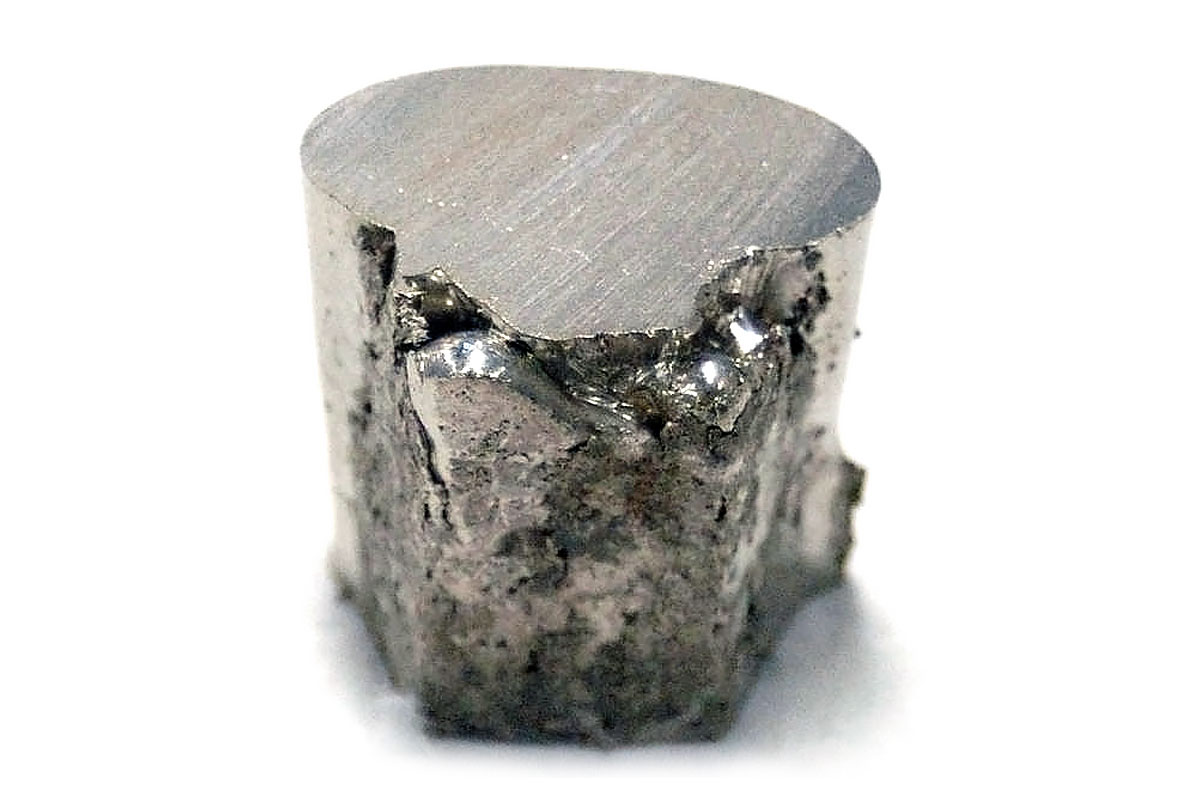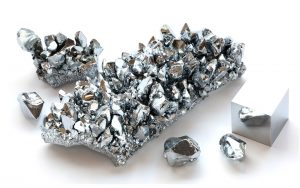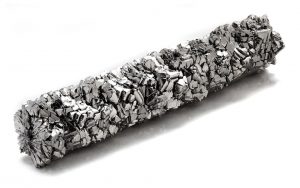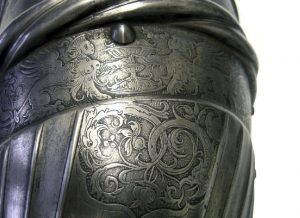Nickel (Ni) – part of a series on metals commonly alloyed with stainless steel to form varying grades of material.
Nickel is an element, and it has an atomic weight of 58.6934. Nickel sits in the periodic table between cobalt and copper – atomic number 28. It is a beautiful color being mainly silvery-white with gold tones.

A piece of the chemical element nickel (Ni). Nickel is resistant to corrosion and is used pre-eminently as an alloying metal in nickel steels and nickel cast irons.
There is an abundance of this element on Earth. Nickel is the 23rd most common element in the Earth’s crust at around one part per hundred but the metal is 100 times more concentrated below the Earth’s crust, than in the crust itself.
The inner core of Earth, around 2,400km across, is thought to be a solid sphere consisting of an alloy of iron and nickel. Nickel makes up about 20% of the inner core.
The Earth’s outer core is about 2,260 km thick and is the only liquid layer of the Earth. The outer core is also thought to compose mainly of iron and nickel with the nickel content again, around 20%. The movement of this outer molten core gives the Earth its magnetic field, which makes life on Earth possible by shielding us from cosmic radiation.
Discovery of nickel
The name nickel is from the German word, ‘kupfernickel’, which loosely translated means ‘devil’s copper’ or ‘copper demon.’ German miners mining copper were the first to discover nickel bearing ore, but at the time no-one could extract anything useful from it apart from a green pigment to color glass.
In 1751, around 100 years after the initial discovery, a Swedish alchemist, Baron Alex Fredrik Cronstedt began studying the mineral found in this ore. He was trying to isolate copper but was unsuccessful. However, he did eventually separate a new silvery-white metal which was later named ‘nickel’. He was the first person to refine and isolate nickel, and in doing so, discovered a new element.
Major deposits of nickel
30% of the world’s available nickel is found and mined in Canada, in an area called the Sudbury Basin. This vast store of the material was unearthed in 1883. The current theory is that around 1.8 billion years ago a colossal asteroid, thought to be similar in size to Mount Everest, slammed into the Earth depositing the nickel.
The Sudbury and Wanapitei impact craters in Ontario, Canada were created by asteroids crashing into the earth billions of years ago. The nickel-rich Sudbury Basin is the large, elliptical structure (60 x 30 km).

The Sudbury and Wanapitei impact craters in Ontario, Canada were created by asteroids crashing into the earth billions of years ago. The nickel-rich Sudbury Basin is the large, elliptical structure (60 x 30 km).
Nickel in humans
Nickel is also a mineral that humans need to consume. We only need around 150 micrograms a day to ensure good health. We get it from many sources, including dry tea leaves. Each kilo of dry tea leaves contains about 7.6 milligrams of nickel.
Nickel is not benign, and it can cause harm to humans if they are exposed to an excessive amount. Objects with a high content of the metal such as jewellery and watch cases, even coins, can cause irritation to the skin when combined with sweat.
Industrial uses of nickel
Nickel is a very durable, lustrous and ductile metal. It has many uses, but at least 50% of the world’s production of nickel is used to produce various grades of corrosion-resistant stainless steel. These stainless steels are then routinely utilised in a multitude of modern industries, including the automotive and aerospace sectors.
Nickel is also alloyed with other metals to give extremely hard-wearing metal alloys. The ability to withstand extreme environments means engineers can use these alloys in rocket engines and other extremely hostile environments. It is the ideal metal to form these so-called ‘superalloys’.

NASA space shuttle and launcher rockets heading into space after take-off. Nickel and other metals are used to create high strength metal alloys for construction.
The nickel alloy 276 has some truly remarkable characteristics. It is an amalgam of 57% nickel, 16% chromium, 16% molybdenum and smaller amounts of other metals. This alloy, unlike stainless steel, is corrosion resistant against hydrogen sulphide gas. This ability means items made from these alloys can be used deep underground, deep within the Earth’s crust where this gas often occurs.
World production of nickel
In 2018, global production was 2,300,000 tons. Indonesia and the Philippines accounted for 40% of that total and other large commercial operations can be found in Canada, Cuba, Australia, Russia and South Africa. The silvery, goldish tone of nickel is still very sought after with a substantial chunk of world production (9%) used to plate other objects.
Nickel is a very popular choice as a color alone – of the x number taps we produce for OEMs (Original Equipment Manufacturers) per annum x % are nickel-colored.








